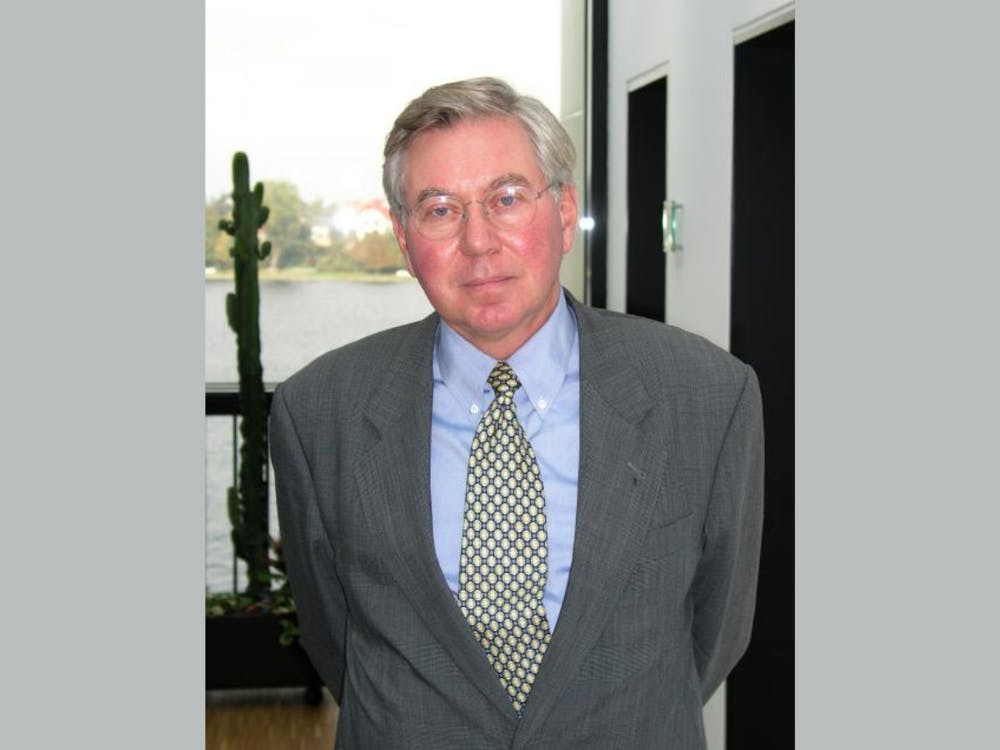James Vaupel, research professor emeritus in the Sanford School of Public Policy, died on March 27 at age 76.
One of Duke’s first three public policy professors and a leading expert in the field of theoretical demographics, Vaupel remained a research collaborator with Duke faculty in the population sciences, retaining his position as a research professor at the Sanford School of Public Policy until his passing.
In 1972, Vaupel was first hired by law professor Joel Fleishman to teach at Duke’s Institute of Policy Sciences and Public Affairs, which later became the Sanford School of Public Policy. As a faculty member, Vaupel was instrumental in creating many of the core courses required for the current public policy major, including Analytical Methods for Public Policymaking and Policy Choice as Value Conflict.
Philip Cook, ITT/Terry Sanford distinguished professor emeritus of public policy studies and one of Vaupel’s first colleagues at Duke, praised his character and scholarship.
“[Vaupel] was an extraordinary person,” Cook said. “Not just because of his brilliance, but also his ability to apply that brilliance to one interesting problem after another, as well as his versatility and creativity, which continued right into the end.”
Through Vaupel’s other positions at universities and colleges, including the University of Minnesota and the University of Southern Denmark, he continued to submit successful grant proposals from Duke through the Duke University Population Research Institute as a research professor. He also founded the Max Planck Institute for Demographic Research in Rostock, Germany in 1996.
By many in his field, Vaupel was considered one of the leading figures in theoretical demographics, specifically in the field of aging. One of his early major research contributions was a pioneering article on the demographic theory of unobserved heterogeneity in “Demography” in 1979, coauthored with Duke colleagues Kenneth G. Manton, research professor emeritus of demographic studies, and Eric Stallard, research professor in the social science research institute.
This paper set the stage for further developments in biodemography where the standard assumption of population homogeneity was no longer needed, Stallard explained. The paper became one of the core texts in the field of population demography.
Stallard taught with Vaupel several times throughout his career and acted as a co-director with Vuapel at the Biodemography of Aging Research Unit for several years as well. The two met early in 1978.
To Stallard, conducting research with Vaupel opened many new doors and unlocked new frames of thinking.
“[Vaupel’s] energy there, and insight to this whole notion of differential susceptibility to death was true,” Stallard said. “It was worth doing. I’m glad I got invited to work with him on that, because that led me to do a whole lot of things that I never would have done before.”
Cook recalls that Vaupel believed demography was an essential building block of all social science and policy analysis.
“[Vaupel] took the chance of joining this risky little startup because he was committed to the new academic field of public policy, and was in fact one of the first to go through the new [doctoral] program at Harvard’s Kennedy School of Government,” Cook said.
According to Cook, remarkably, Vaupel never dropped his connection with Duke despite traveling to two continents and basing his later life in Denmark. From Cook’s perspective, Vaupel’s work was extremely pertinent to the trends we see today in population demographics.
Some of Vaupel’s work looked at the future of social security, Medicare and Medicaid in an attempt to understand how the aging population would change over time, according to Cook.
But Vaupel also wasn’t afraid to leave the desk to pursue his research. Cook recalled when Vaupel “set off on a pilgrimage” to meet the oldest person on earth at the time, a 126-year-old woman in France.
“He said he actually had a chance to say hello to her and talk to her. What can be better if you're interested in aging, to see the possibilities?” Cook said. “I think the main thing was just his endless curiosity and great versatility in terms of how he approached problems and his ability to get everyone around him engaged and interested.”
Oftentimes, to Cook, working with Vaupel felt less like a job and more like fun.
“I really enjoyed bouncing ideas off each other and proceeding with work. It was the kind of best academic life, and why a lot of us got involved in the first place,” he said. “He personified the best of life and of the mind.”
Vaupel experienced “a brief period of critical illness,” according to a release. Still, he continued to write and publish, finish a paper days before he went to the hospital, Cook said.
“He will be greatly missed not just by his friends, but scientific fields that he was involved in,” Cook said.
Get The Chronicle straight to your inbox
Signup for our weekly newsletter. Cancel at any time.

Ishani Raha is a Pratt junior and a senior editor of The Chronicle's 119th volume.

